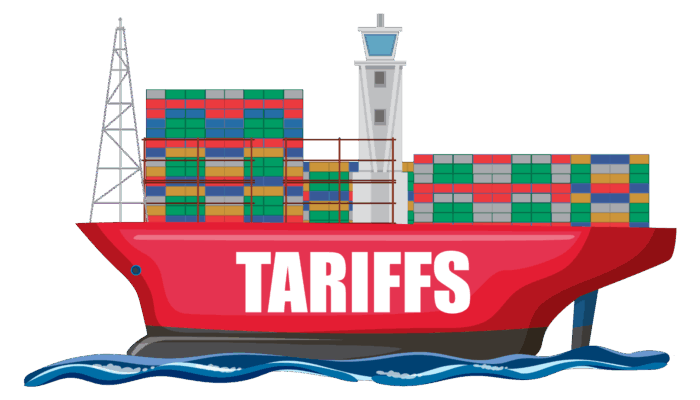Luxury brand consumers have come to expect an exceptional experience when shopping and purchasing—both online and in-store. While fulfillment complexity is a common challenge that must be solved for nearly all retailers, luxury brand fulfillment is unique in more ways than one.
What are the top unique challenges of luxury fulfillment? Let’s explore.
1) Out of Stocks—the ultimate faux pas
Picture this. A customer visits your website, intent on buying a certain product. They have done their research, find the item in their preferred size or color and check out. But wait—they get a notification soon after telling them the product is out of stock. Now you have a disappointed customer who has had a poor brand experience.
Why did this happen? You likely don’t have an accurate, single view of all your inventory. With inventory data siloed across different systems and locations, it makes it much harder to keep track of what’s in stock, being processed and sold. When you want to provide a premium brand experience, knowing what inventory you have available to sell (ATS) is crucial.
2) Quality checks before packing
Quality is of the utmost importance when it comes to luxury goods. And as orders are packed, you want to ensure all items have gone through a quality check. This is typically a manual process. But with the right system in place, you can configure workflows to manage and automate manual processes such as quality checks to alert staff when orders come through.
3) Order consolidation = a better customer experience
While many retailers and brands rely on split shipments to get goods to customers faster, as a luxury brand, the customer experience is always top of mind. This means that split shipments are not always the best option. Some customers may prefer fewer shipments, so you’ll want to provide them with the option to have their order consolidated before shipping.
You may even prefer to consolidate your shipments and provide a single shipment to customers, to provide a superior packaging experience. Even if it means transferring inventory from one place to another. For example, if your distribution centers (DC) have special packaging used just for home deliveries that’s not available in stores, you might transfer items from a store to a DC for fulfillment so order can be expertly packaged, before being sent off to the customer.
4) Managing counterfeit returns
The luxury counterfeit market gets more sophisticated by the day. Counterfeit designer bags may come to mind, but phony goods go beyond that—think sunglasses and perfume. And thieves are getting even more cunning. Some order the actual item and then return a counterfeit product instead. So how have some luxury brands combatted this?
Take perfumes for example. Some brands are putting laser-engraved numbers on the bottle, but it’s only viewable if it’s held at a specific angle under a special light. The fashion industry has even provided training to customs personnel to better enable them to identify counterfeit goods being shipped across international borders. With the right information and technology, employees working in your returns center can validate whether a product is genuine. Serial numbers, hidden IDs, even the packaging can indicate whether someone is returning a knock-off. But do your employees know what to check for? You can help make the returns process smoother when you configure workflows that prompt your staff to perform these checks when items are returned.
5) Payment fraud check rules
Manual processes can slow things down. But payment fraud checks are necessary when it comes to high-value—and high-cost—items. If your average order value (AOV) is in the thousands, for example, you may want orders to go through a payment fraud check. A process that can be automated with the right workflows in place. What can it check for? First the buyer—are they a new customer or a VIP? Then the actual payment and credit card issuing company may be checked. With a fraud check in place, this can help reduce headaches later on.
6) Meticulous sourcing rules
Luxury fulfillment oftentimes calls for specific, meticulous sourcing rules. Part of what makes a brand exclusive is the limited availability of certain products. Often produced in restricted quantities. Sometimes a store’s inventory is controlled by headquarters—and sometimes on a global level. But it makes inventory availability a challenge.
When each location only receives a small number of items for each SKU, this puts pressure on the brand to monitor—in granular detail—exactly how many units are being sold and when.
You must have an accurate view of store stock in near real-time, otherwise you risk overselling and a canceled order. So tracking accurate Available to Promise (ATP) and Available to Sell (ATS) inventory is extremely important. Especially when there is no more stock available. And if there are replenishments, managing the levels, replenishment dates and in-stock positions become even more important.
How complex can it get? You may have over a dozen sourcing rules, with each rule using 3-4 criteria points to determine the most optimal location to ship from. That can be up to nearly 50 rules/criteria to run. Without a best-in-class system in place to handle this level of complexity, you run the risk of out of stocks, canceled orders, and ultimately disappointed customers.
7) Pick by location, department, or product specialty
Luxury products can be more specialized, which means that multiple pickers may be involved for a single order. This might be based on where stock is physically located, or the specialty knowledge of a store associate. Take an order that includes items for both adults and kids. These are likely located in two different areas—which means you have a dedicated picker per space. How can you make sure all items are picked and packed in a timely, accurate manner? You need the ability to craft your staffs’ pick and pack process to add, edit or skip steps to meet your unique business needs.
8) Emergency stock for high-value customers
Customer experience is important. But it’s even more critical for your high-value customers to have an excellent experience. That’s where your buffer / safety stock comes into play, both online and in-store. You can confidently offer items for sale online without the risk of canceled orders or disappointed in-store customers by setting a buffer or safety stock—whether that is by product, category, location, or a combination. And you can even add custom alerts: for example, one that triggers an alert to staff when a buy online pick up in-store / click and collect order comes in from a high-value customer so you can make sure they are getting the quickest—and best—experience possible.
9) Transfer of ownership
Luxury goods are expensive—especially when you consider the cost of some luxury watches or handbags. Timing of the transfer of ownership between the retailer, shipper, and ultimately the customer, is extremely important, and should occur seamlessly. While many retailers will charge a customer for an online purchase when it ships, for high value items, precise timing can be essential. For example, in the seconds between the arrival of a courier and handing a package to them for delivery. At this point, it means the retailer is no longer responsible for the product—the carrier is. But only with agile systems can you ensure this process runs smoothly. And without a fast and seamless process, errors can occur—which can be costly to your bottom line.
Summary
The stakes are higher when it comes to luxury goods and customer experience. You need a system that can handle the unique fulfillment needs of your luxury brand.
With Fluent Order Management you can get full control over your customer’s delivery and pickup experience. Every detail can be meticulously crafted—from pre-orders to fulfillment to returns—when you have a flexible order management system. What’s more, you can:
- Improve your inventory visibility and accuracy
- Configure and extend the fulfillment workflows to fit your unique business needs, and
- Get full control over what you sell in each channel, market or region.
If your ERP and Commerce platforms are just not cutting it, it’s time for an order management system that can handle your needs. To learn more about Fluent Order Management and how we can help you create an outstanding customer experience, schedule a demo today.



